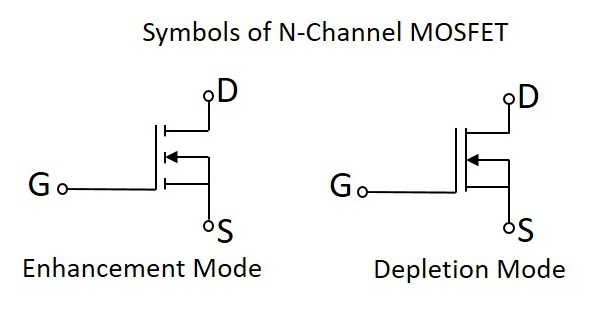Here’s my schematic and board design for a simple low side switch using a N channel mosfet. It’s a simple circuit that has a input for positive and negative and an output for positive and negative connections. Pretty self explanatory. It seems like every time I go to work with mosfets I have to spend a good 5-10 minutes reminding myself how they work. So here’s a reminder to myself for the next time I go looking and maybe it’ll help somebody else out.
An ohmmeter can identify a burned-out JFET.http://www.sciencewriter.net. N-channel FET In an n-channel 'depletion-mode' device, a negative gate-to-source voltage causes a depletion region to expand in width and encroach on the channel from the sides, narrowing the channel.
You can download the board file here. For reference, the mosfet I’m currently using is this which is a TO-252 package, where the gate to source threshold voltage of 2.4V and a maximum gate to source voltage of 20V. I typically prefer a high side switch for protection reasons but this has it’s use as well. Specifically, this type of switch is often used with a microcontroller to control power to something since the 0V and 5V that a microcontroller can produce is enough to switch the circuit.
N Channel Fet Circuit
In this case I’m using this circuit board as a switch to control power between the input and the output sides. The key thing here is that the positive line passes straight through which means that the circuit will always have a connection to power. The switch blocks the return path to ground so that no current flows until the switch is flipped. R1 is a resistor that pulls the the gate down to ground so that if the switch becomes disconnected thigs don’t go crazy. Even when controlling this with a microcontoller instead of a switch, you should always (yes always) have this resistor in place. When the switch is open, the voltage between gate and source is zero so no current flows. When the switch is closed, the gate is pulled up to the positive voltage input (8V in this case) and Vgs is 8V which is above the threshold of 2.4V so current flows through the fet.

WARNING: Note that if you use this as a switch then you are leaving your circuit connected to power but not connected to ground. This means that if anything comes loose and makes that connection to ground, you could be screwed.
N Channel Fet Circuit
Here are a couple good resources for fets:
N Channel Fet
Sparkfun According to Pete Mosfets
BaldEngineer Mosfets
BaldEngineer High Side Switch
Jonathan Currie Youtube – Introduciton to Mosfets
